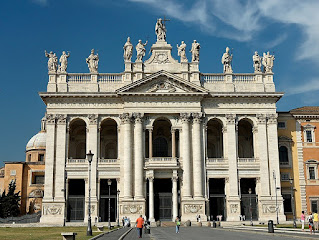Cesare Mori - Mafia buster
'Iron Prefect' who 'eliminated' the Cosa Nostra
Cesare Mori, the prefect of police credited with crushing the Sicilian Mafia during the inter-War years, died on this day in 1942 at the age of 70. At the time of his death he was living in retirement in Udine, in some respects a forgotten figure in a country in the grip of the Second World War. Yet during his police career his reputation as a hard-line law enforcer was such that the Fascist dictator Benito Mussolini personally appointed him as prefect of Palermo, charged with breaking the Mafia’s hold over Sicily and re-establishing the authority of the State by any means necessary. Mori was born in Pavia in Lombardy, by then part of the new Kingdom of Italy, in 1871. His upbringing was difficult. His first years were spent living in an orphanage, although his parents were not dead and looked after him after he had turned seven. He attended the Military Academy in Turin and was set on a career in the army but after marrying Angelina Salvi in 1897 he quit and joined the police, taking up a posting in Ravenna. His first experience of Sicily came with a brief posting to Castelvetrano, near Trapani, where he captured a notorious bandit, Paolo Grisalfi. Read more…
_________________________________________________________
Goffredo Mameli - writer
Young poet wrote the stirring words of Italian national anthem
Patriot and poet Goffredo Mameli died on this day in 1849 in Rome. A follower of political revolutionary Giuseppe Mazzini and a supporter of the Risorgimento movement, Mameli is the author of the words of the Italian national anthem, Fratelli d’Italia. Mameli was the son of a Sardinian admiral and was born in Genoa in 1827 where his father was commanding the fleet of the Kingdom of Sardinia. As he grew up he became interested in the theories of Mazzini and he joined a political movement that supported the idea of a united Italy. Mameli was a 20-year-old student when he wrote the words that are still sung today by Italians as their national anthem. They were sung to music for the first time in November 1847 to celebrate the visit of King Charles Albert of Sardinia to Genoa. The anthem is known in Italian as L’inno di Mameli or Mameli’s hymn. Mameli became involved in the movement to expel the Austrians from Italy and joined Garibaldi’s army. He also became director of a newspaper that launched a press campaign urging the people to rise up against Austria. He died after being accidentally injured in the leg by the bayonet of one of his colleagues during a battle. Read more…
_________________________________________________________
Pietro Valpreda - the ‘bomber’ who never was
Jailed suspect acquitted after 16 years
Pietro Valpreda, who was arrested following the Piazza Fontana bombing in Milan in December 1969 and was held for 16 years awaiting trial as a terrorist before being acquitted, died on this day in 2002. The Piazza Fontana bombing killed 17 people and injured 88 others after a device was detonated inside the Banca Nazionale dell'Agricoltura in Piazza Fontana, which is just a few streets away from the Duomo in the centre of Milan. Valpreda was an anarchist sympathiser but insisted he was at home on the afternoon of the incident, being cared for by an aunt, who swore under police questioning that her nephew, who was a dancer with a vaudeville company, was suffering from flu. He was charged, however, on the evidence of a taxi driver, Cornelio Rolandi, who said he dropped a man fitting Valpreda’s description in the vicinity of the bank before the bomb went off and picked him up again afterwards, minus a briefcase he had been carrying when he dropped him. Despite considering Rolandi’s evidence to be unreliable on the grounds of inconsistencies in his description of events, prosecuting magistrates held Valpreda. Read more…

























